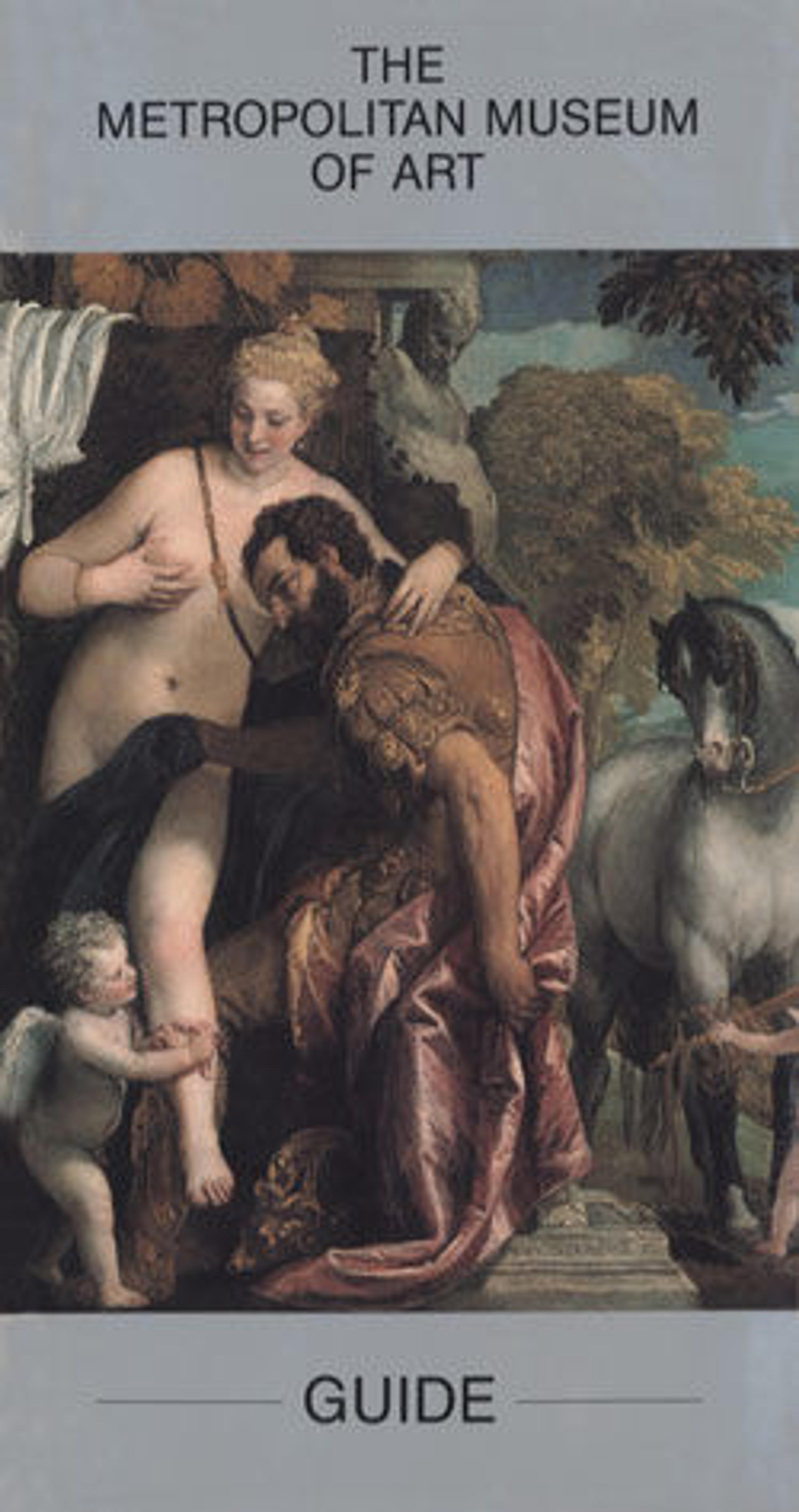Processional Cross
This cross conveys the luxury found within churches that dotted the Christian kingdoms of northern Spain during the Middle Ages. It comes from a twelfth-century church fifty miles east of Oviedo, once the capital of the kingdom of Asturias. The cross shows a crowned, crucified Jesus flanked on the cross’ arms by the Virgin Mary and Saint John. An angel appears at the top, as Adam rises from his grave at the bottom. A rock crystal above Jesus’ head covers a cavity that still holds an unidentified relic. Gilded filigree bars attached to each of the arms of the cross served as settings for an array of gems, including antique intaglios. Only two remain—one showing an ancient figure of Victory, and the other a male nude with a fish and spear—both prized embellishments suitable for a sumptuous object. A Latin inscription on the reverse reads: “In honor of the Holy Savior: Sanccia [Sancha] Guidisalvi had me made.” The feminine ending of Sanccia indicates that the donor, or possibly the goldsmith, was a woman.
Artwork Details
- Title: Processional Cross
- Date: ca. 1150–75
- Geography: Made in Asturias, Spain
- Culture: Spanish
- Medium: Silver, partially gilt on wood core, carved gems, jewels
- Dimensions: 23 1/4 in. × 19 in. × 3 7/16 in. (59.1 × 48.3 × 8.7 cm)
- Classification: Metalwork-Silver
- Credit Line: Gift of J. Pierpont Morgan, 1917
- Object Number: 17.190.1406
- Curatorial Department: Medieval Art and The Cloisters
More Artwork
Research Resources
The Met provides unparalleled resources for research and welcomes an international community of students and scholars. The Met's Open Access API is where creators and researchers can connect to the The Met collection. Open Access data and public domain images are available for unrestricted commercial and noncommercial use without permission or fee.
To request images under copyright and other restrictions, please use this Image Request form.
Feedback
We continue to research and examine historical and cultural context for objects in The Met collection. If you have comments or questions about this object record, please contact us using the form below. The Museum looks forward to receiving your comments.
